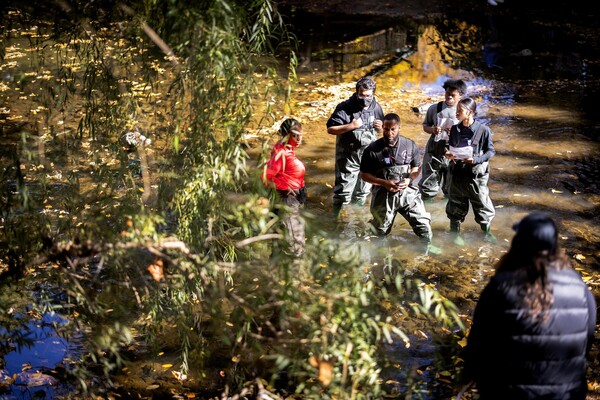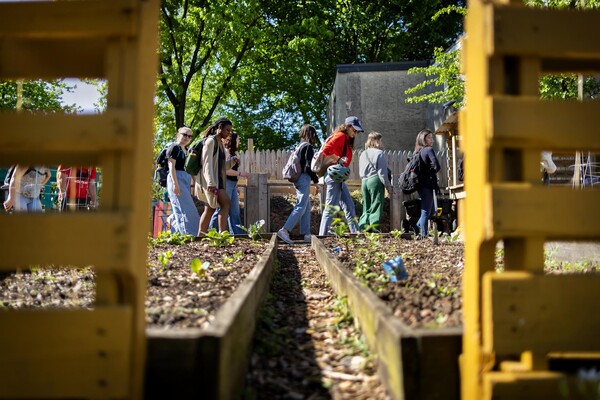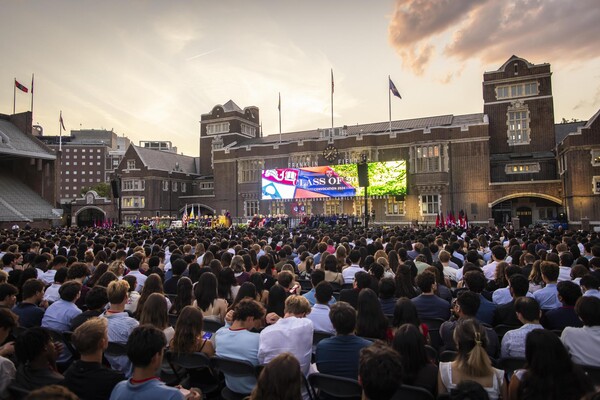Penn profs explore Gilded Age estate
It seems like a natural: Two Penn professors— an award winning architecture critic and a renowned landscape architect—teaming up to write a book together. It came about purely by chance, though, that Witold Rybczynski, the Martin & Margy Meyerson Professor of Urbanism and professor of real estate (pictured at right, with book), and Laurie Olin (at left), practice professor of Landscape Architecture, came to work on “Vizcaya: An American Villa and its Makers.” The book, which explores the story of Vizcaya, a Gilded Age estate on Biscayne Bay, was recently published by Penn Press.
The story of the book’s genesis goes like this. Several years ago, the two professors were in Palm Beach, Florida, for a retreat honoring top-level donors to the University. Former Federal Reserve Chairman Alan Greenspan was the featured after-dinner speaker and during the day guests got to choose from a roster of field trips, including a guided tour of Vizcaya with Rybczynski and Olin. “We came up with the idea of Laurie talking about the gardens and me the house,” says Rybczynski, who also teaches architectural theory in the School of Design. “We went in and walked around ourselves since we had to figure out what we’d show people.”
What the pair found was a 40-room Baroque mansion and, says Rybczynski, “one of the most spectacular Italian gardens anywhere, including Italy.” Not much had been written about it, he says, “because it’s in Miami, which nobody takes seriously… and there were no famous people involved.”
F. Burrall Hoffmann, Jr., the architect hired by the estate’s owner, James Deering, was well trained but inexperienced. The garden designer, Diego Suarez, a 25-year old Colombian who had spent time in Italy, was similarly wet behind the ears. To oversee them both, Deering signed up Paul Chalfin, an artist who, says Rybczynski “saw the house the way a painter would see it.”
Olin and Rybczynski ended up stretching a summer project into a two and a half year endeavor. What made the task of unearthing Vizcaya’s history easier was that 90 percent of the house, which stayed in the family through the 1960s, was completely intact. “That’s very unusual,” says Rybczynski. “Most of those houses were used through the ’30s then sold by the family and used by a school or religious order who’d beat them up.”
The more the two professors studied Vizcaya, the more it eluded easy classification. Copying neither a particular house or style, the house was an “eclectic mix of things,” says Rybczynski, with 100-year-old roof tiles from Cuba doors and a mantelpiece from Italy.
Unlike Biltmore and the Newport mansions, Vizcaya had an almost rustic feel enhanced by weatherbeaten limestone from the Florida keys and rough cement instead of marble. The garden, too, was without precedent. Italian in flavor, it featured a distinctly Floridian 60-acre lagoon garden that, writes Olin, was an “extraordinary composition of winding lagoons, canals, water, islands, peninsulas, tropical planting, paths, and bridges.” Rybczynski says Vizcaya was interesting to him in part because he wanted to take a serious look at a period in architecture and landscape architecture that has been largely dismissed by history. Now, he says, people are once again building ambitious homes with landscaped gardens, and in that context the Gilded Age “starts to look not like a dead end but part of a tradition of very wealthy people” building very expensive houses. And it’s not just about money, he says, but also the kind of self confidence to take on such an enormous project. During the decade it took to build Vizcaya, a thousand people worked on the house, many from the Bahamas.
“I live in a smaller house,” says Rybczynski, “but if I was building a 30,000 square foot house, you have to look at chateaus, not cottages.”







